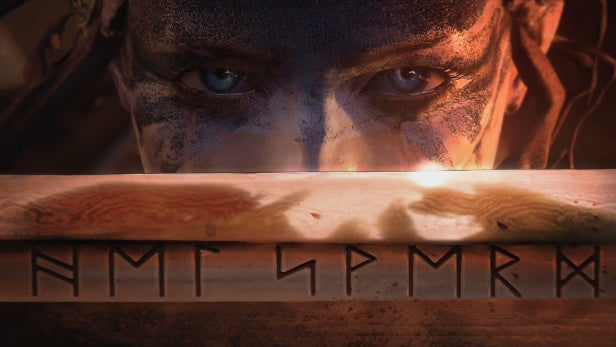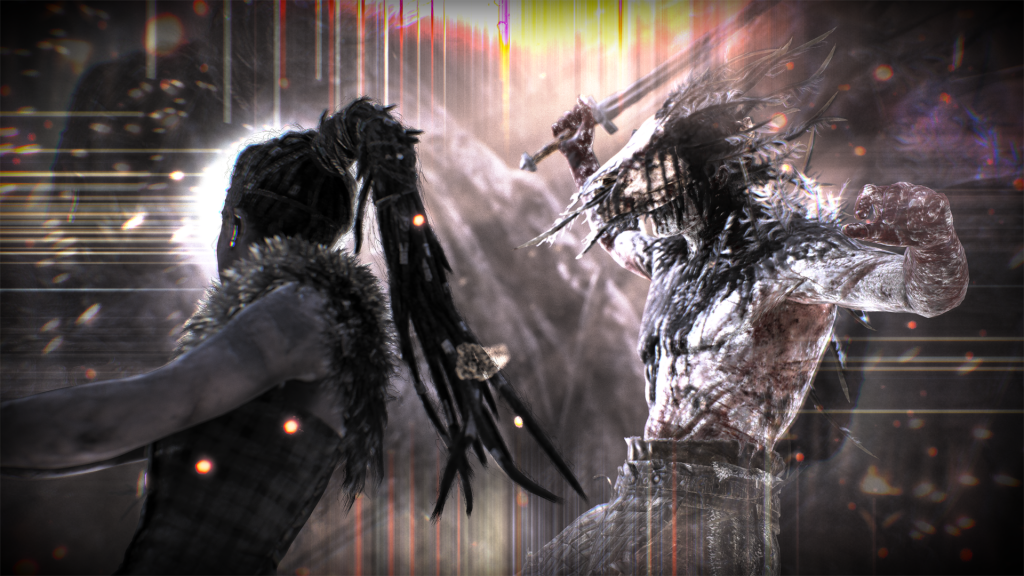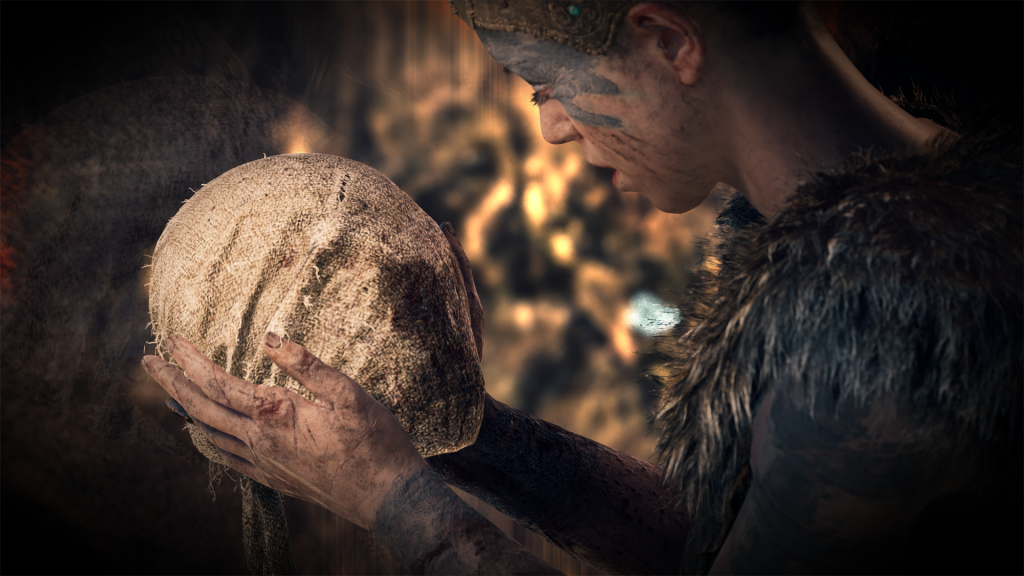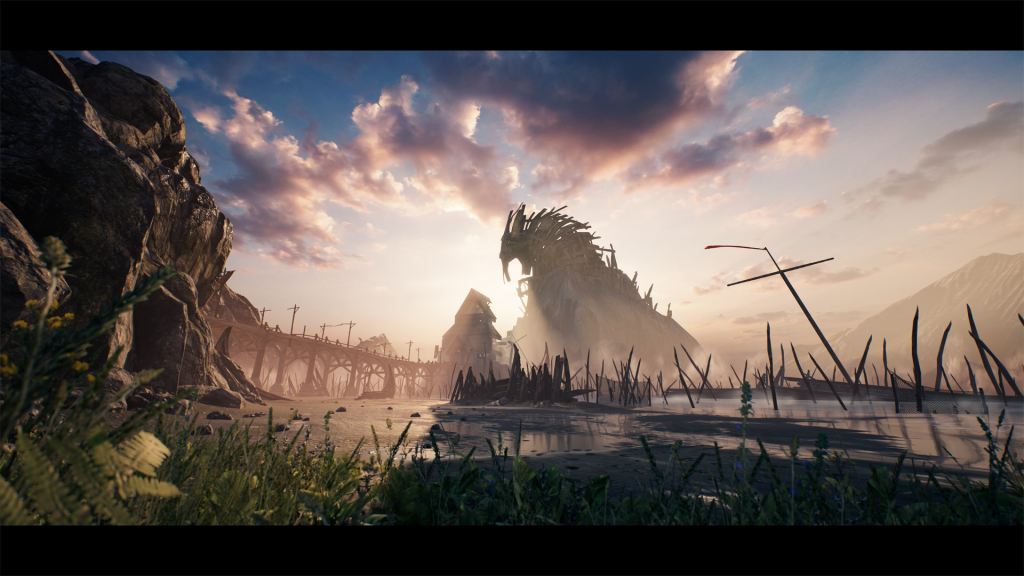Hellblade: Senua’s Sacrifice Review
Hellblade: Senua’s Sacrifice
Ninja Theory's greatest work yet tells an incredible tale

Verdict
Pros
- Incredible visuals and audio
- Brutal and kinetic melee combat
- Clever perspective-based puzzles
- Immersive storytelling that could only work in games
Cons
- Action takes time to warm up
- Be prepared to discover things for yourself
Key Specifications
- Review Price: £24.99
Available on PS4, Xbox One and PC
Editor’s Note: Hellblade: Senua’s Sacrifice is now available on the Xbox One family of systems with additional Xbox One X support. We have updated our review to reflect this and taken a look at the One X enhancements.
Hellblade: Senua’s Sacrifice isn’t Ninja Theory’s biggest game, but it might be its best. For years the studio has slogged away at ambitious cinematic action titles, bringing in the likes of Andy Serkis, Alex Garland and Nitin Sawhney to make games that looked and felt like works of art. More focused and concise, Hellblade works on a smaller, more intimate scale, yet combines superb visuals, audio and gameplay into one hugely coherent, powerful experience. Hellblade is damn close to perfect.
It’s both a myth – a Norse-meets-Celtic spin on the hero’s tale – and a psychological character study, following the quest of a young warrior, Senua, to enter hell and reclaim a loved one’s soul. To say that Senua has her demons is putting it mildly. She hears voices, has visions and suffers from psychotic breakdowns; all handled sensitively and intelligently by Ninja Theory with advice from University of Cambridge Professor of Health Neuroscience, Paul Fletcher, and the Wellcome Trust.
Related: The Last of Us Part 2

The game doesn’t shy away from Senua’s illness, instead putting it front and centre of the whole experience. As you play, you’ll hear Senua’s voices, constantly commenting, warning, panicking, advising. Perspective, distortion, heightened senses, fear and ways of seeing things are all integral to what you need to do. And while Senua’s quest is, on one level, a physical journey through trials, perils, fearsome foes and terrifying ideals, it’s also on another level an inner journey. Only by wrestling with her demons and trusting in herself and in others can Senua hope to survive.
In terms of visual and audio design it’s an amazing effort. There’s something of The Revenant in Hellblade’s style, the camera haunting Senua from a close third-person perspective, the sounds she’s hearing, the game switching with a Focus button to give us the world from something closer to Senua’s direct point of view. It makes the experience incredibly visceral and close to unbearable at times.
And Senua’s mythical world is one of the strongest we’ve seen this generation, forging haunting landscapes from a cocktail of Norse legend, dark fantasy and body horror, with landscapes that can instantly shift from gloomy and fog into brilliant sunshine. In 1080p on PS4 it’s incredible, while on PS4 Pro in a checkerboard 4K with HDR it’s nothing short of astonishing. And all that audio-visual artistry is anchored by a series of strong performances, most mixing voicework with heavily treated video, but with Melina Juergen’s nuanced motion-captured performance as Senua at the core.
Now the game is available on Xbox One, Ninja theory has provided Xbox One X enhancements in the form of three different graphics settings. Enriched visuals, high frame rate and high resolution are all available for selection. Unlike games such as God of War or Shadow of War, there’s no pause after switching between different settings; you can jump straight from the pause menu back into the game. On resuming the game, it takes a second or two for the alteration to kick in, making the adjustment to visual changes a little more subtle than it is in the two games mentioned earlier – and, at times, it’s certainly far more noticeable.
The game will literally remove foliage from a scene and regenerate it in line with your preference. If you favour enriched visuals then the greenery will be more dense, whereas switching to the other settings will see this lushness stripped back somewhat. When looking at rock formations, switch away from high resolution and a noticeable haze will crawl across them. Of course, the jump from 30fps in either high resolution or enriched visuals is the most immediately noticeable.
With each offering something unique (unless you don’t own a 4K TV, in which case high resolution is null and void), and Hellblade’s ease of switching between all three, it really is a case of choosing your preference at any point in the game.
Related: Best PC Games

The concern early on is that the game’s artistic achievements aren’t always matched by the gameplay. It’s stunning to look at, powerful to listen to and strangely affecting, but not quite as engaging as it should be to actually play. Early on you have combat against one, two or three creepy animal skull-masked warriors, using a fairly simple block, dodge and counter system, plus some fairly basic puzzles that involve trying to find the shapes of runes within Senua’s surroundings, usually to open up a door. I grew concerned that Hellblade might be a walking simulator with weak puzzles and sudden bursts of ultraviolence.
Give it time, though, and Hellblade will work you harder. Senua’s attempts to track down a trickster god bring in clever puzzles of perspective and hidden routes. A series of trials see you robbed of light and vision, or navigating paths and gateways between light and dark versions of the world. There are sections that play on your fears, sections that mess with your viewpoint and sections that will test your speed and nerve. More than once audio is pulled to the foreground as a way to test more than just your reflexes. What’s more each element seems to be more than just another cool idea or game mechanic, but a way of exploring who Senua is and why she suffers.
The combat, too, keeps getting better. While the lack of tutorials and on-screen prompts is in most respects a good thing, it took me ages to realise how to chain blocks, attacks and evasive manoeuvres in combos, how to spot and counter assaults from outside your point of view, and how to use Senua’s focus abilities in battle. Once I did, things fell into place and I started enjoying the ferocious flow of battle.
Related: E3 2018

As with everything in Hellblade, it can be so tense as to be quite stressful, but it never oversteps the mark and becomes frustrating. New enemy types – all cleverly identifiable – start rolling in with new weapons and attack patterns. You go from fighting one or two guys at a time to battling different groups in different configurations and having to work on your positioning, timing and crowd control. Basically, you need Senua to become the badass warrior you know she can be just to survive, though she never ceases to seem a very human, vulnerable figure, even as she slices and dices the nightmares away.
Interestingly, the game hints early on at a permadeath situation, but this didn’t actually trigger during my initial playthrough. If anything, this fear made the action all the more exciting, though I’m not sure I’d have been too cheerful had I had a game over screen some six or seven hours in.
Let’s end with a caveat. As with any game where story and character are so important, experiences will differ. You may not connect with Senua and her story, and you might not find the game as absorbing and powerful as I did. For me, though, there’s something about Hellblade’s commitment to its character and to a vision that sets it apart. Haunting, rich, strange and beautiful, it’s an action game unlike anything you’ve played before.
Related: Call of Duty Black Ops 4

Verdict
Hellblade triumphs equally as action game, mythic quest and psychological character study, bringing together some amazing visuals, great performances and ingenious design. It’s short-lived but perfectly paced with a blend of action and puzzles that grows in richness and complexity as the game goes on. While some might prefer Enslaved or the DMC reboot, I’d call it Ninja Theory’s best work yet.

